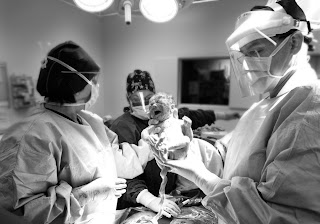 In the past decade, the rate of premature births in the United States has seen a concerning rise. While the exact cause of early birth remains unknown, researchers are becoming increasingly worried that environmental factors may be to blame.
In the past decade, the rate of premature births in the United States has seen a concerning rise. While the exact cause of early birth remains unknown, researchers are becoming increasingly worried that environmental factors may be to blame.
Dr. Paul Winchester, a professor of clinical pediatrics at the Indiana University School of Medicine, presented his findings on this issue at a recent medical conference. He discovered a correlation between the use of pesticides and nitrates in the US and the growing number of premature births. These chemicals, which end up in surface water, follow a seasonal pattern that aligns with the increase in premature births.
The research team, which included Dr. Winchester and his colleagues from various institutions, analyzed over 27 million live births in the US between 1996 and 2002. They found that premature births were most prevalent from April to July when pesticide and nitrate levels in surface water were highest. In contrast, the lowest rates of premature birth occurred from August to September when the chemicals were at their lowest levels.
Furthermore, the correlation between premature birth rates and pesticide and nitrate levels was not influenced by factors like the mother’s age, race, education, marital status, alcohol consumption, smoking status, or place of residence.
The US Geological Survey also supported these findings, revealing that pesticide and nitrate levels in surface water peak from May to June and are lowest from August to September, aligning with the rates of premature births observed during the same time period.
Dr. Winchester’s prior research also demonstrated a connection between the seasonal levels of these chemicals in water and birth defects, emphasizing the need to address environmental factors in pregnancy outcomes.
As a neonatal specialist, Dr. Winchester believes that the growing number of birth defects and premature babies can be attributed to the increasing levels of pesticides and nitrates in our water supply. He highlights the detrimental effects of prenatal exposure to these chemicals on pregnancy outcomes.
Dr. James Lemons, a leading expert in neonatology, praised Dr. Winchester’s work and its potential impact on future research and public health initiatives. He emphasized the importance of recognizing the far-reaching effects of environmental contaminants on pregnancy outcomes and child development.
The findings presented by Dr. Winchester at the Pediatric Academic Societies meeting have brought attention to the urgent need for further research and action in addressing the impact of pesticides and nitrates on premature births. The implications of this study have far-reaching consequences for both public health and environmental stewardship.






